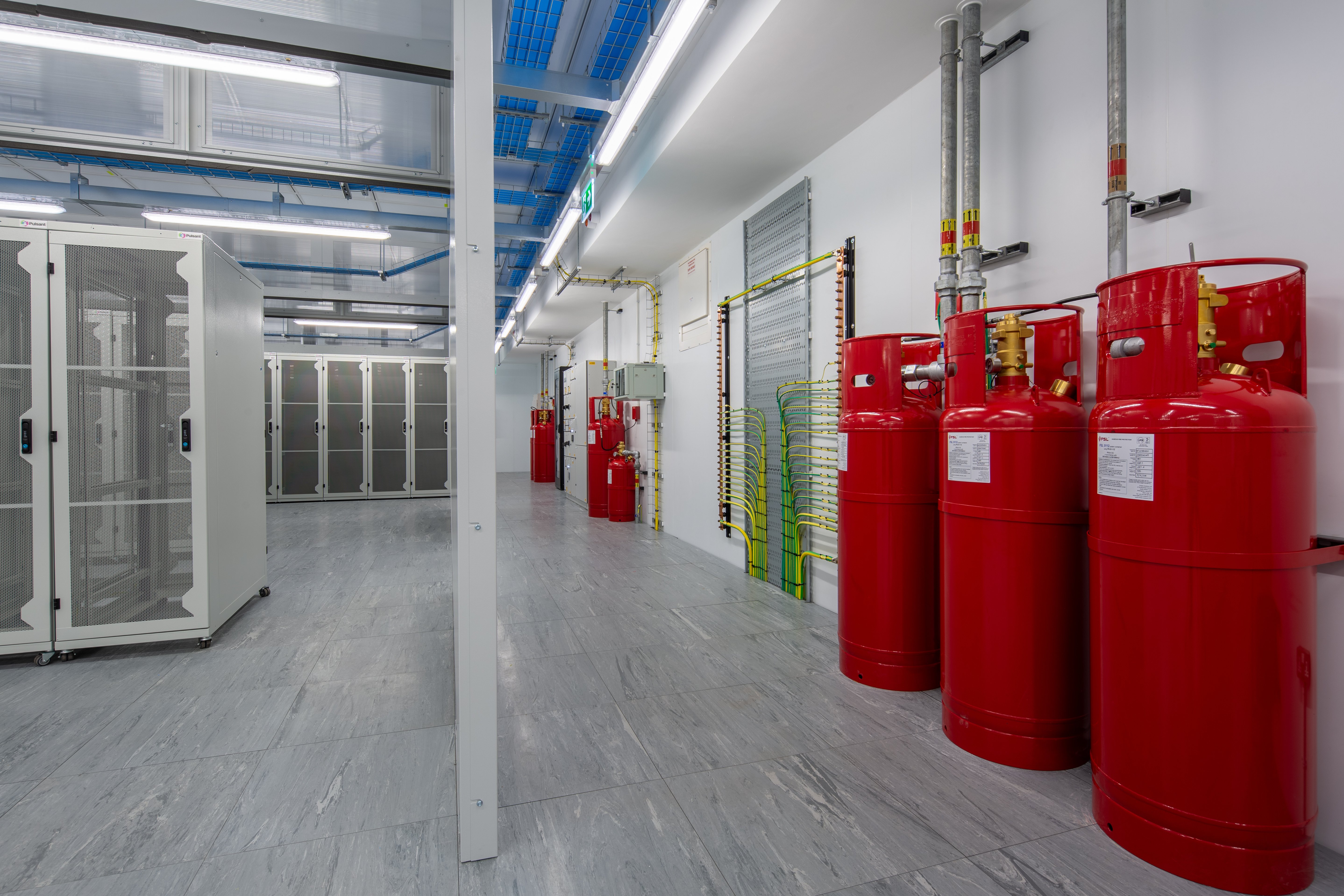
Data centres often hold the fluorinated gas (f-gas) HFC-227ea, traded under the name FM-200, as an emergency measure to stop fires in data halls and technical space without harming electrical equipment. Robust fire prevention helps avoid devastating human, operational, financial, and environmental consequences, but there’s a problem with this particular gas – if released, it has an immense global warming potential.
Data centres are not the only users of these systems, but it has been an attractive option in technical environments, as it avoids damage to hardware when used. It is sometimes even described as ‘environmentally friendly’ because of zero ozone-depletion impacts. And looking at the scale of the issue from the top down, the UK’s HFC emissions from fire protection systems have been estimated at around 250,000 tCO2e in 2022[1]; only about 0.06% of the UK total. However, this is likely to cause under-appreciation of the problem and mask the opportunity for data centres to make a positive change by choosing an alternative solution.
1 kg of HFC-227ea has the global warming potential (GWP) equivalent to 3220 kg of CO2e over a 100-year period, which is the usual way of standardising the impacts of various gases. However, the method of averaging impacts over 100 years has been criticised[2], since the warming impact of gases like methane and HFCs is concentrated in the first couple of decades. HFC-227ea doesn’t hang about in the atmosphere for longer than about 36 years, during which its atmospheric heating impact occurs. Looking at an alternative 20-year time horizon, each kilo HFC-227ea has the increased GWP of 5310 kg of CO2[3]; or over 1000 tonnes of CO2e for each 200kg cylinder.
Unlike slower f-gas leaks from cooling systems, a bank of cylinders can be discharged in minutes. Gas can be released as a result of the system being triggered correctly in response to smoke, or accidentally, for example, from hardware failures. For perspective, the impact of a 200kg cylinder release is higher than the annual electricity-related emissions for some smaller data centres and could easily outweigh the annual progress operators achieve in energy efficiency.
Framing this positively, preventing f-gas losses in our direct (Scope 1) emissions profile reduces global warming effects more quickly than avoiding CO2. Direct emissions are worthy of our focussed attention - because nobody else is going to address them for us – and they are one of the elements operators can most clearly control.
Pulsant has been publicly committed to phasing out HFC-227ea by 2030, and this year aim to have reduced our holdings by 50% by replacing gas cylinders with near-zero GWP alternatives. Some engineering has been required to allow for a greater physical footprint of alternatives, and it’s not clear how this has avoided emissions since incidents are – fortunately – far from routine.
The swaps are also an excellent way to anticipate longer term supply risk. Measures are in place to phase down the use of HFCs in the US, Great Britain and EU, as well as many other countries through the Kigali Agreement, and while actions are primarily focussed on f-gas use in cooling and refrigeration, there is risk that HFC-227ea price and availability will reflect increasing limits on its use. Organisations looking to refill the gas following a discharge may find themselves in difficulties, and the alternative gases are not an instantaneous replacement.
As an industry, data centre operators rightly focus on efficiency and energy-related initiatives, but we are just not talking about the potential harm of our fire suppression systems. Some operators may not use HFC-227ea at all already – and that’s great. But this is an under-appreciated issue, particularly amongst facilities who have not yet directed resources at examining their emissions footprint in depth.
It’s time to broaden the conversation. Let’s improve awareness, share best practices, and collaborate on phasing out high-GWP fire suppression gases. Addressing this “silent” emissions source could significantly enhance the industry’s sustainability performance—and it’s well within our control.
[1] UK territorial greenhouse gas emissions statistics - GOV.UK
[2] New carbon accounting method prioritizes short-lived pollutants, Trellis 2025
[3] Changes in Atmospheric Constituents and in Radiative Forcing, IPCC 2018



